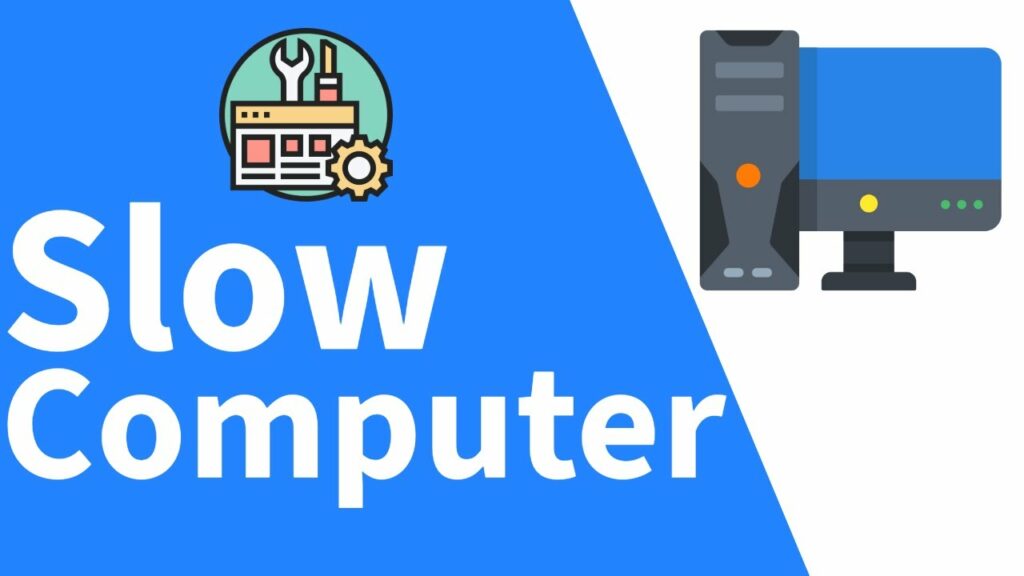Unveiling the Labyrinth: A Comprehensive Guide to Diagnosing and Resolving Slow Performance Issues on Your PC

In the fast-paced realm of digital endeavors, the gradual onset of slow performance in a personal computer can be a frustrating and perplexing experience. A sluggish PC not only hampers productivity but also tests the patience of users navigating the digital landscape. In this extensive guide, we embark on a journey to unravel the complexities behind slow PC performance, exploring potential causes, and providing a comprehensive set of solutions to breathe new life into your computing experience.
Understanding the Sluggish Quagmire: Decoding the Causes of Slow PC Performance
Before delving into solutions, it’s crucial to comprehend the multifaceted reasons behind the sluggish performance of a PC. This issue can be attributed to a variety of factors, ranging from hardware limitations to software-related challenges.
Common Causes of Slow PC Performance:
- Insufficient RAM:
- Issue: Running multiple applications simultaneously or using resource-intensive software can overwhelm insufficient RAM, leading to slow performance.
- Solution: Upgrade RAM capacity or close unnecessary applications to free up memory.
- Outdated Hardware:
- Issue: Aging hardware components, such as processors and storage devices, may struggle to keep up with modern software demands.
- Solution: Consider upgrading hardware components, especially the CPU and storage, for enhanced performance.
- High Disk Usage:
- Issue: Excessive disk usage, often due to background processes, can lead to slow response times.
- Solution: Identify and manage background processes, upgrade to a faster storage drive, or optimize existing drives.
- Software Bloat:
- Issue: Accumulation of unnecessary or redundant software, often referred to as bloatware, can consume system resources and contribute to slow performance.
- Solution: Uninstall unnecessary programs, disable startup applications, and perform regular software cleanups.
- Malware and Viruses:
- Issue: Malicious software infiltrating the system can significantly degrade performance.
- Solution: Conduct thorough malware scans using reputable antivirus software and keep security programs updated.
- Fragmented Hard Drive:
- Issue: Fragmentation occurs when files are scattered across the hard drive, impacting read and write speeds.
- Solution: Regularly defragment the hard drive or consider upgrading to a solid-state drive (SSD).
- Operating System Issues:
- Issue: Operating system glitches, corruption, or outdated system files can contribute to slow performance.
- Solution: Update the operating system, run system file checks, and consider a clean OS reinstall if necessary.
- Overheating:
- Issue: Overheating of components, especially the CPU and GPU, can result in thermal throttling and decreased performance.
- Solution: Ensure proper ventilation, clean cooling components, and consider additional cooling solutions if needed.
Comprehensive Solutions for the Sluggish PC Enigma: A Step-by-Step Guide
**1. Upgrading RAM: Enhancing Memory Potential
- Steps:
- Check Current RAM Usage: Use Task Manager to assess current RAM usage and identify applications consuming significant memory.
- Upgrade RAM: If RAM usage is consistently high, consider upgrading to a higher capacity.
**2. Updating Hardware: Breathing New Life into Components
- Steps:
- Assess Hardware Age: Evaluate the age and specifications of your CPU, storage, and other key components.
- Upgrade Hardware: Consider upgrading critical components to newer and more powerful versions to meet current demands.
**3. Managing Disk Usage: Optimizing Storage Efficiency
- Steps:
- Identify Resource-Hogging Processes: Use Task Manager to identify processes causing high disk usage.
- Optimize Storage: Consider upgrading to an SSD for faster read/write speeds, manage background processes, and clean up storage.
**4. Tackling Software Bloat: Streamlining Digital Operations
- Steps:
- Uninstall Unnecessary Programs: Use the Control Panel or Settings to uninstall programs not regularly used.
- Disable Startup Applications: Use Task Manager to disable unnecessary programs from launching at startup.
**5. Malware and Virus Cleanup: Safeguarding Digital Integrity
- Steps:
- Run Antivirus Scans: Use reputable antivirus software to conduct thorough scans of the system.
- Regular Security Updates: Keep antivirus definitions and security software up-to-date to guard against emerging threats.
**6. Defragmenting Hard Drive: Organizing Digital Territories
- Steps:
- Windows Built-in Tools: Utilize built-in tools like Optimize Drives to defragment hard drives.
- Consider SSD Migration: If feasible, consider upgrading to an SSD, which doesn’t require traditional defragmentation.
**7. Addressing Operating System Issues: Ensuring Software Integrity
- Steps:
- Update Operating System: Install the latest updates and patches for the operating system.
- Run System File Checks: Use tools like System File Checker (SFC) to identify and repair corrupted system files.
**8. Preventing Overheating: Cooling System Optimization
- Steps:
- Check Temperature Levels: Use hardware monitoring tools to check component temperatures.
- Improve Ventilation: Ensure proper airflow by cleaning dust from fans and optimizing the system’s physical placement.
Proactive Measures for a Revitalized PC: Sustaining Optimal Performance
While the solutions provided address immediate concerns, implementing proactive measures ensures sustained PC vitality. Consider the following tips to maintain optimal performance over time:
**1. Regular System Maintenance:
- Schedule routine maintenance tasks, including software updates, disk cleanup, and hardware checks.
**2. Resource Monitoring Tools:
- Use monitoring tools to track system resource usage and identify potential issues before they impact performance.
**3. Storage Management:
- Regularly organize and clean up storage to prevent the accumulation of unnecessary files.
**4. Security Best Practices:
- Practice safe browsing habits, keep security software updated, and exercise caution when downloading or installing software.
**5. Cooling System Vigilance:
- Regularly clean cooling components, optimize system ventilation, and consider additional cooling solutions if needed.
**6. Professional Maintenance:
- Periodically seek professional assistance for in-depth system checks, hardware diagnostics, and maintenance.
Conclusion: Unleashing the Potential of Your Digital Workhorse
In conclusion, addressing the slow performance of a PC demands a systematic and informed approach. By understanding the potential causes, implementing the comprehensive set of solutions, and embracing proactive measures, you can revitalize your digital workhorse and ensure a consistently optimal computing experience.
Remember that each PC configuration is unique, and some solutions may need to be adapted based on specific hardware components and software environments. By staying vigilant and proactive, you can navigate the challenges of slow PC performance with confidence, unleashing the full potential of your digital companion in the dynamic landscape of computing.




